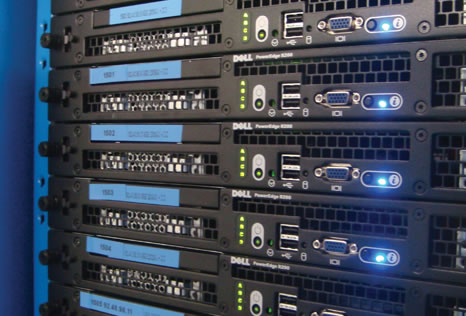<p>The constant evolution of technology can sometimes leave us breathless, but probably never more so than when it comes down to maintaining technological businesses and website security.<br />
It seems sometimes that no sooner has one type of protection been implemented, then something else is on the horizon waving a red flag to warn us that more is on the way and we had better hop to it double time!<br />
The most voracious, is probably the DOS attack making it no less damaging than it’s cousin, the DDOS attack. Despite the lack of a ‘D’ it’s well known in this technological age for the damage it has caused, and no doubt in the future for the damage it will cause, as it expands and eats it’s way through a lunch of emails and websites.<br />
In the meantime the inventor of such a devastating virus is doubtless pondering on a new and improved version to introduce to a new and unsuspecting audience. This is why ddos protection and ddos mitigation for the <span style="text-decoration: underline;">dedicated server</span> have become so popular in the fight against such devastating attacks.</p>
<h2><strong>Denied</strong></h2>
<p>Denial-of-Service attacks are just that, a rather coarse attempt at stopping the recipient gaining access to websites or particular services on the internet. By using up large amounts of computer memory a DOS attack is capable of disabling an entire network in a matter of minutes, passing on packets of data from the initial infected source machine to any other connected directly to it, and in turn of course to any other machine connected to those.<br />
The Packets of data over loading the system down to a near stop, and in some worse case scenarios, causing the whole system to crash, thereby rendering it completely useless to all who wish to use it. It can literally be never ending.</p>
<h2><strong>Distributed Denial</strong></h2>
<p>The difference between a DOS attack and a DDOS attack are the amount of attackers involved. DOS are generally Solo attackers. DDOS are multi attackers and have proven to be extremely difficult to track and are therefore subsequently much more dangerous.<br />
They have been responsible for bringing down the systems of large companies, and have the extra ‘D’ in front of the title DDOS because a “Distributed” D-of-S attacker will use a multitude of computers to cause their mayhem.<br />
The even worse news is (assuming that the beginning applied – though that remains to be seen) that it is not only large companies that are being brought down by the DDOS mafia. It can apply to anyone with a website that another person or company finds threatening or dislikes for whatever reason.<br />
The good news is that smaller companies don’t usually get hit with quite as bad an attack due to the hacker believing them to be a weaker target with poorer defenses but this doesn’t have to be the case if you put ddos protection into action.<br />
<figure id="attachment_20801" aria-describedby="caption-attachment-20801" style="width: 230px" class="wp-caption alignleft"><img class="size-full wp-image-20801 " src="https://haznos.org/wp-content/uploads/2013/07/images3.jpg" alt="Are You Vulnerable To A DDOS?" width="230" height="216" /><figcaption id="caption-attachment-20801" class="wp-caption-text">Image Source: www.lxdesystems.com</figcaption></figure><br />
As to what goes through the minds of these hackers maybe at some point down the line, the reason gets left behind and pure vindictiveness takes hold. And still, at other times it seems that an attacker will do as I just said and use a smaller or more vulnerable site on which to practice their technological black arts.<br />
The list has yet to come to an end and the only way to combat this is to make sure that you are adequately protected. Of course, following on from common technical difficulties, it may prove to be a little harder to acquaint yourself with the knowledge of an attack, as opposed to genuine problems with the technology.<br />
Maintenance would go some way to mistakenly thinking a DDOS attack may be happening, but the pointers to be mainly aware of in such a situation are, that a DDOS is more likely to severely accelerate the spam you are receiving in your email inbox. It will restrict, if not completely halt your ability to reach any website or make it impossible to access particular sites. There will also be a noticeable slow down in the performance of your network to a crawl.</p>
<h2><strong> Avoidance &#8211; A Helpful Tactic</strong></h2>
<p>There is nothing simple about the DDOS attack. Therefore it stands to reason that there is no simple solution to avoid it. There are however some initial preventative measures that should be taken into account and sought whenever possible and available.<br />
The installation and usage of anti virus software should be established as soon as is humanely possible. Email filters and an awareness of security protocol go a long way when giving out personal or company email addresses.<br />
Add a firewall into your system limiting the categories of traffic flowing to and from your site, and last but not least, pay for the services of a web host that is competent at foiling DDOS in it’s tracks.<br />
If you combine these preventative measures with a good ddos protection service you’ll be way ahead of the game in being able to fend off any attacks in the future.</p>

Are You Vulnerable To A DDOS?
